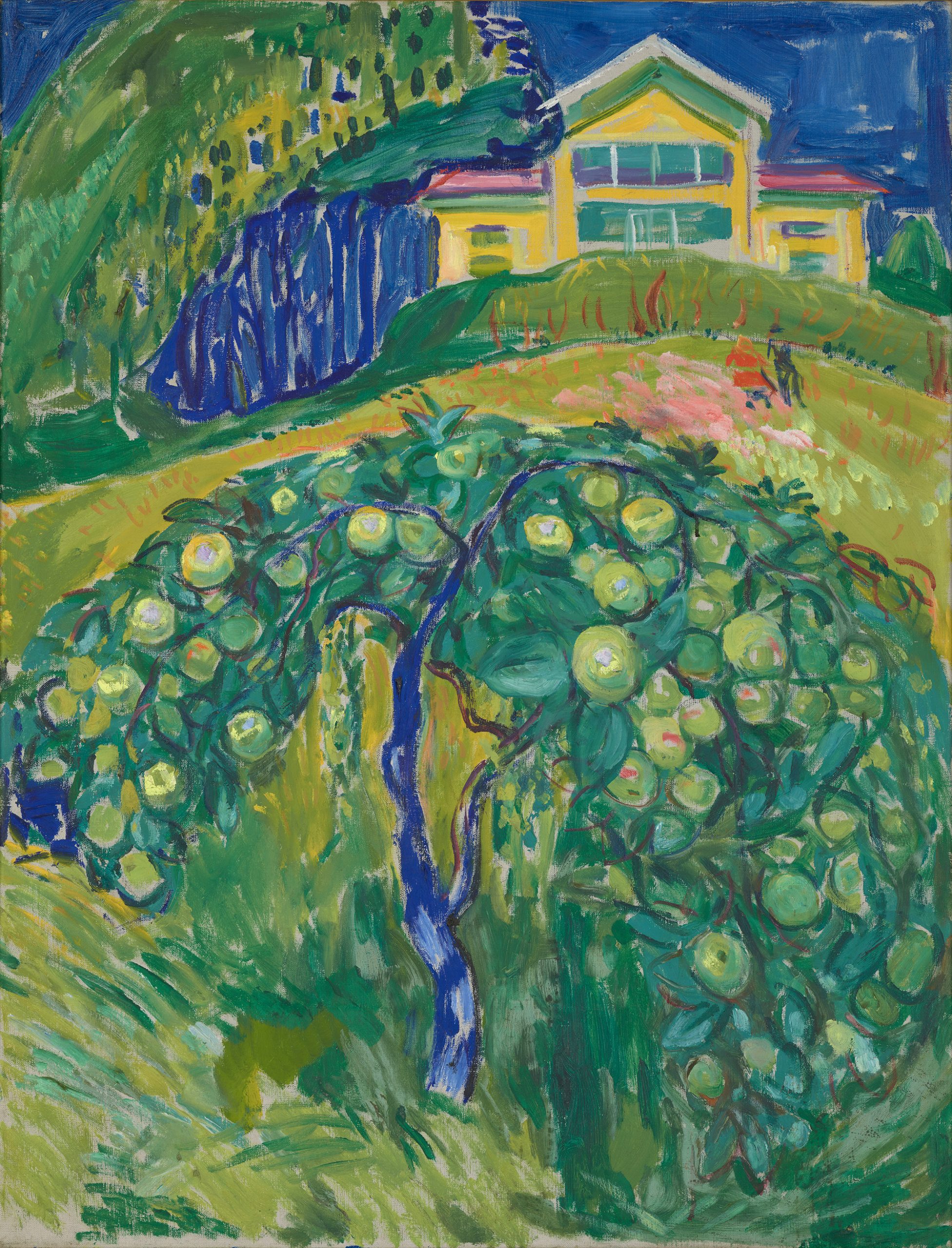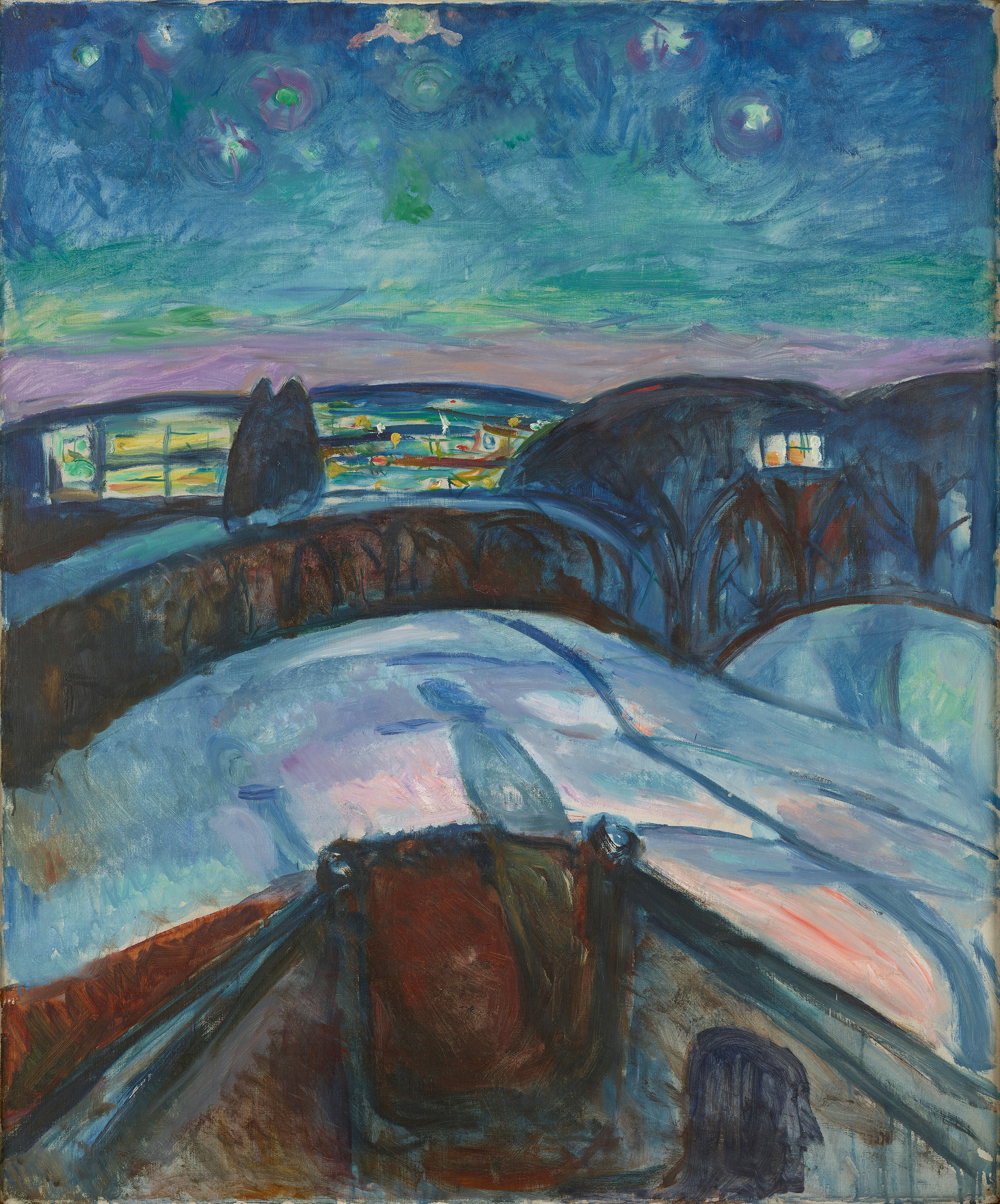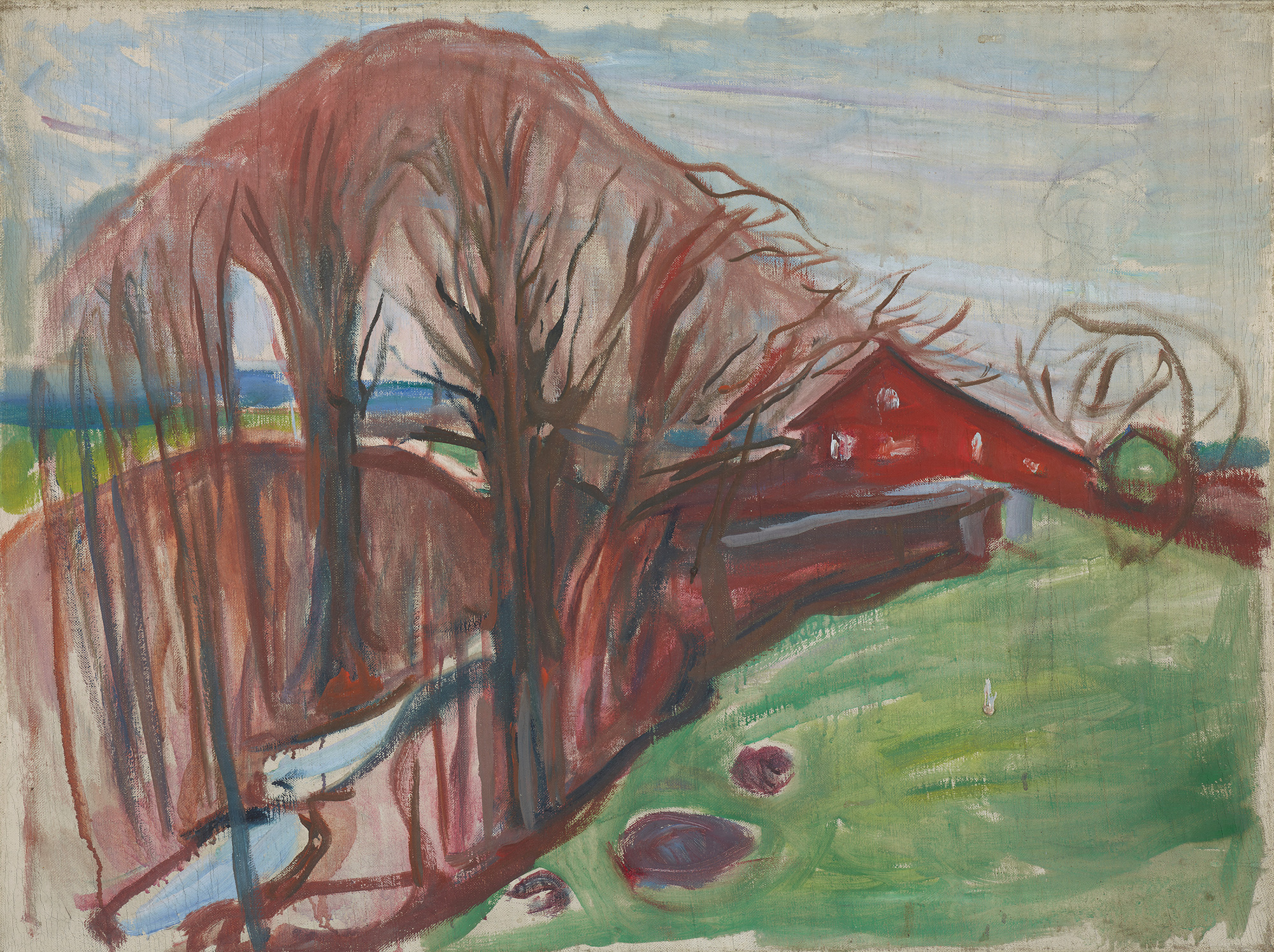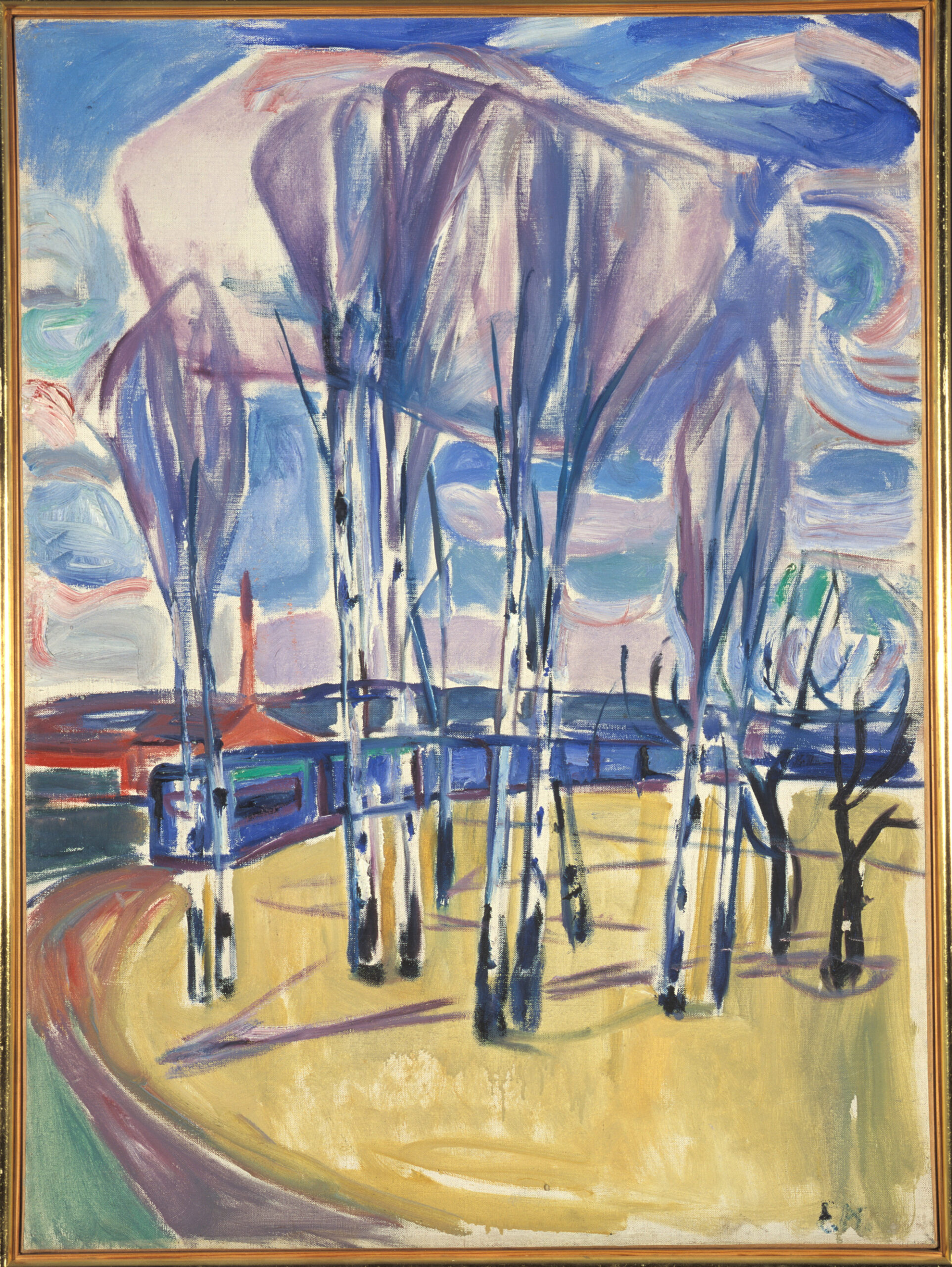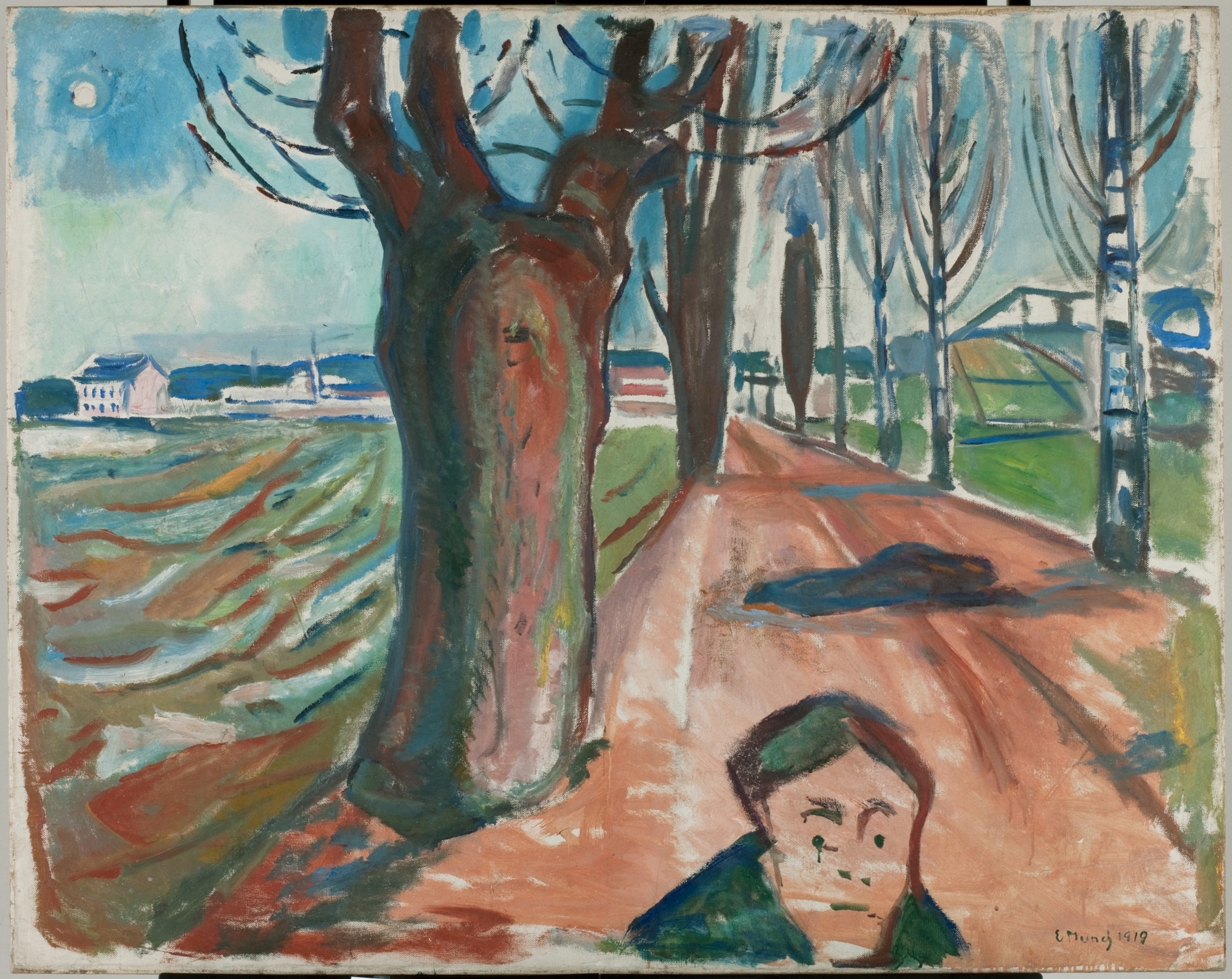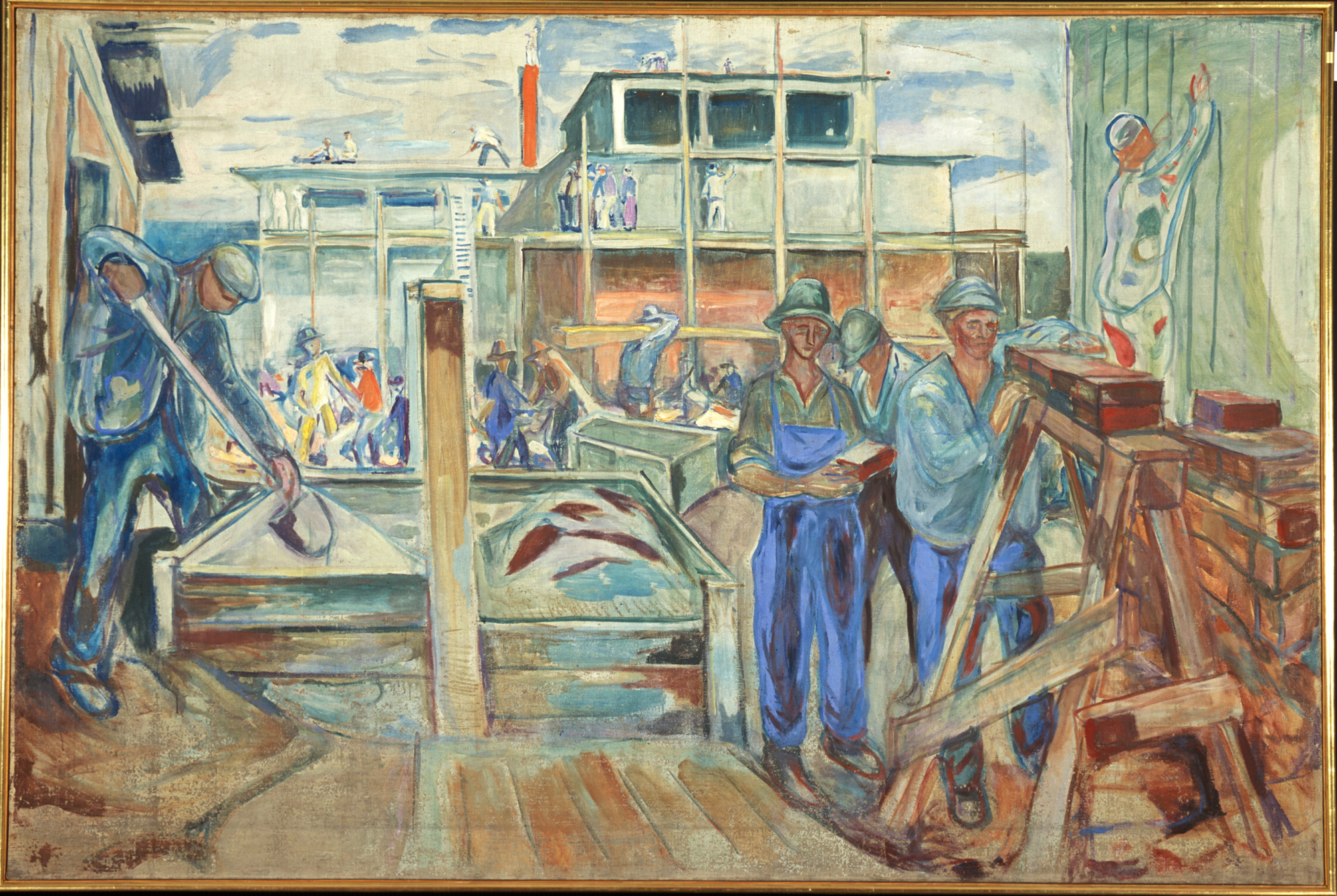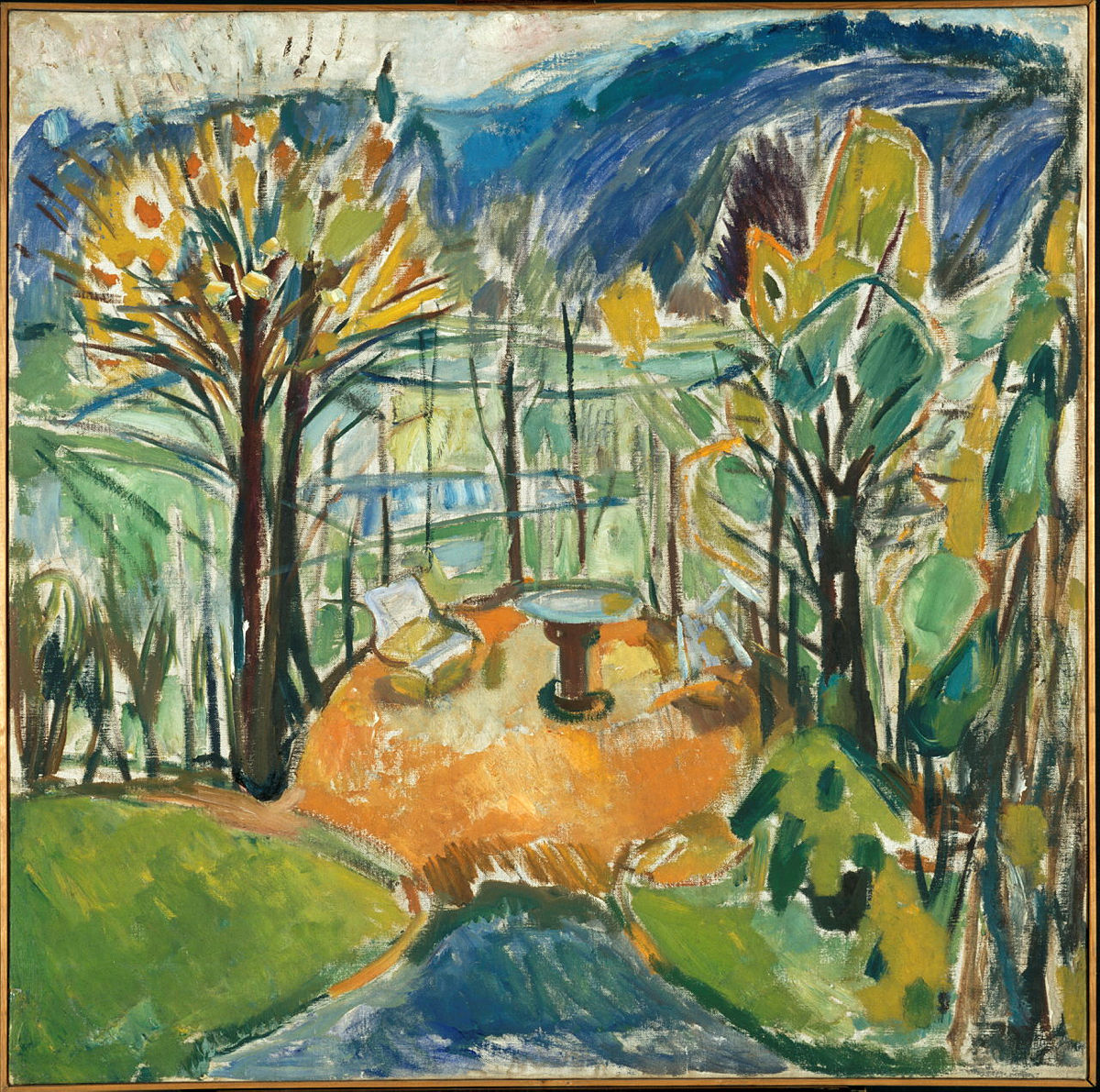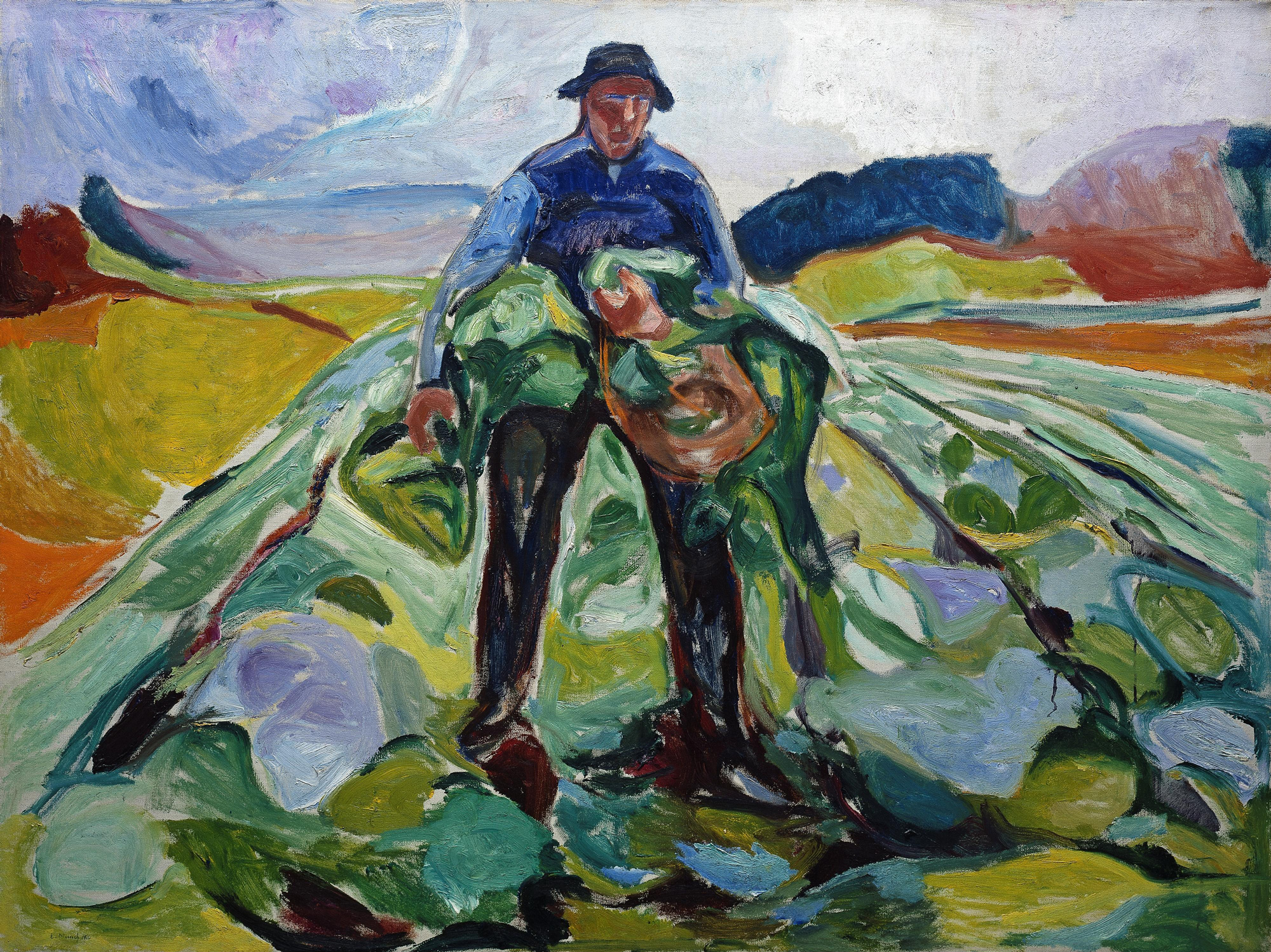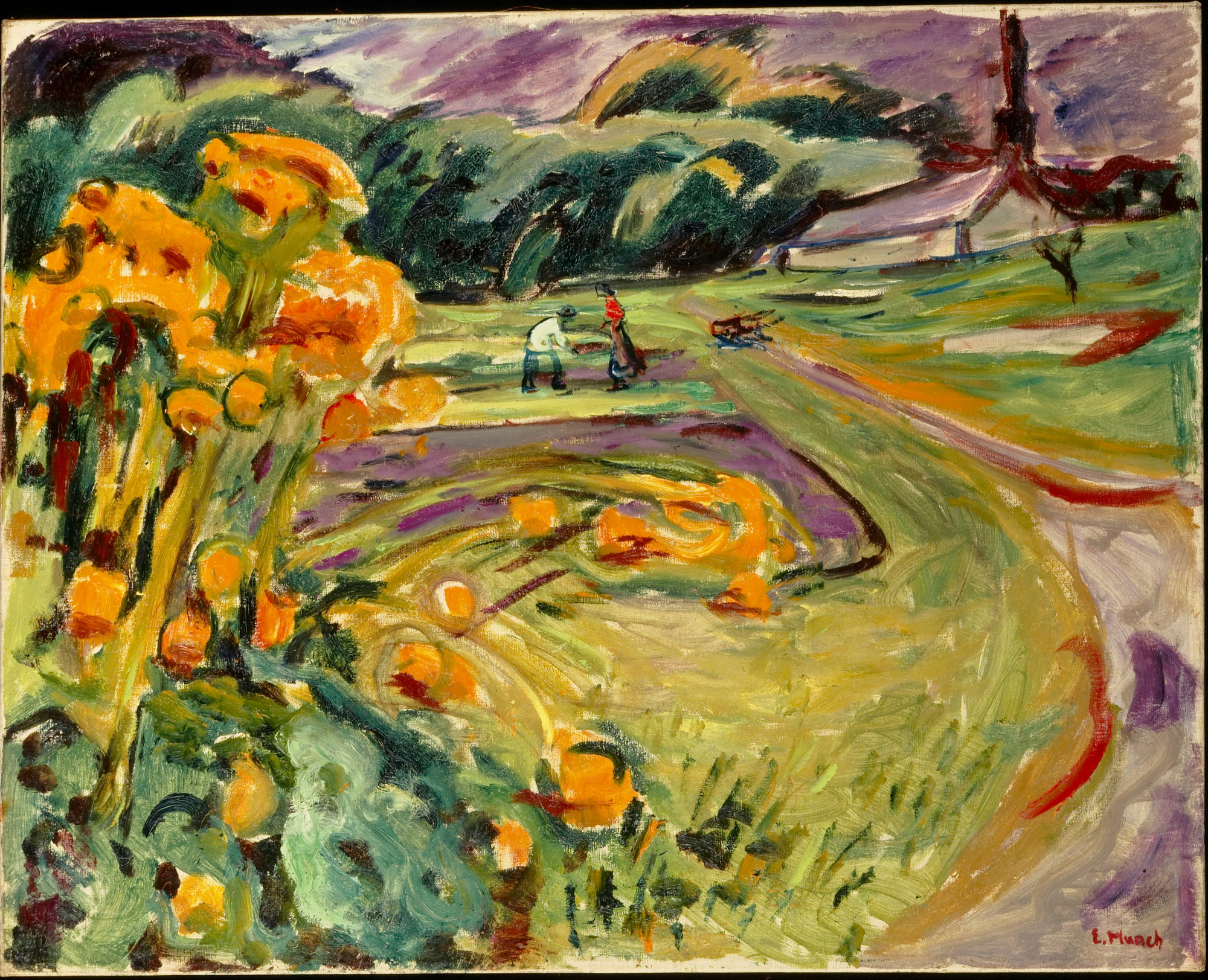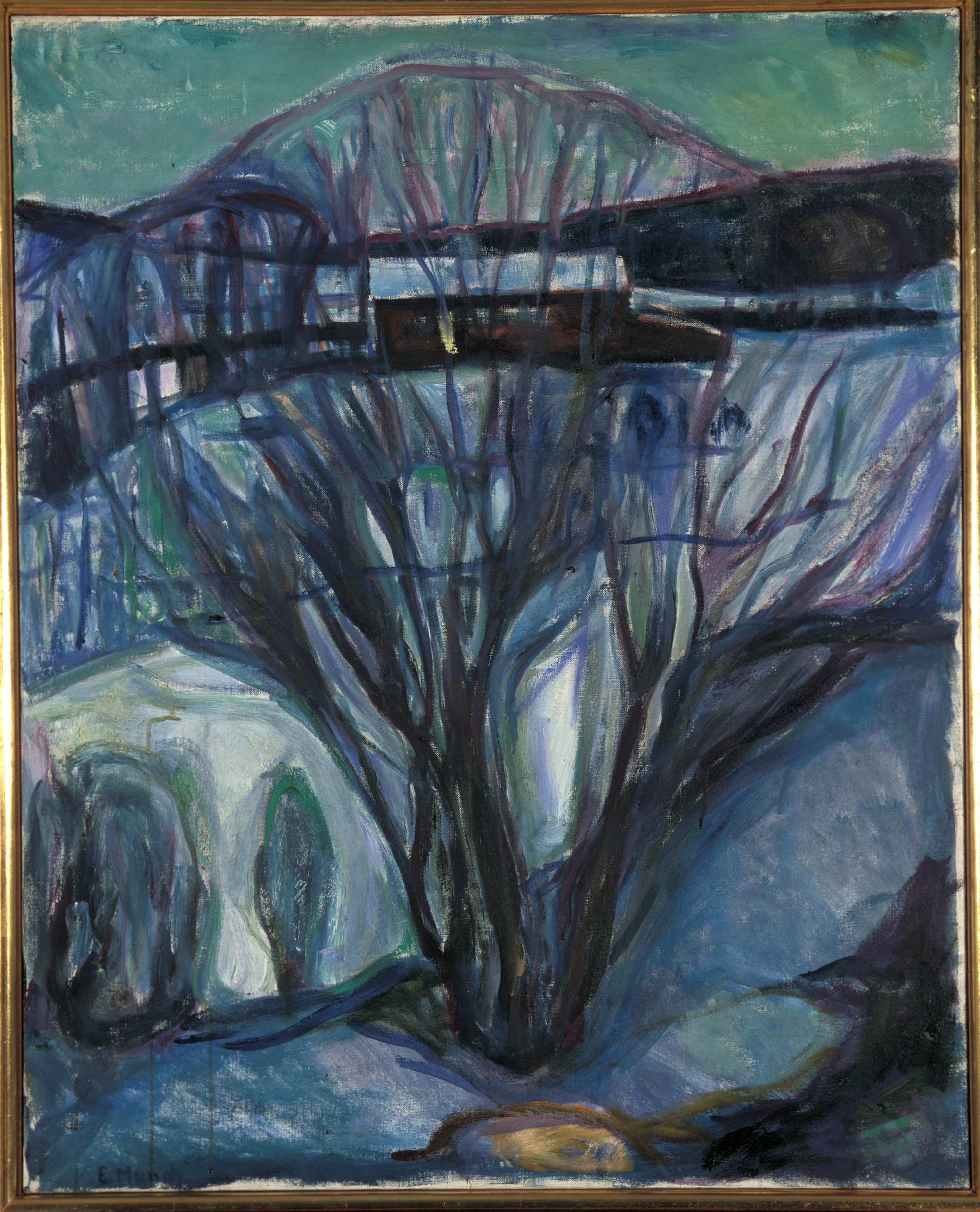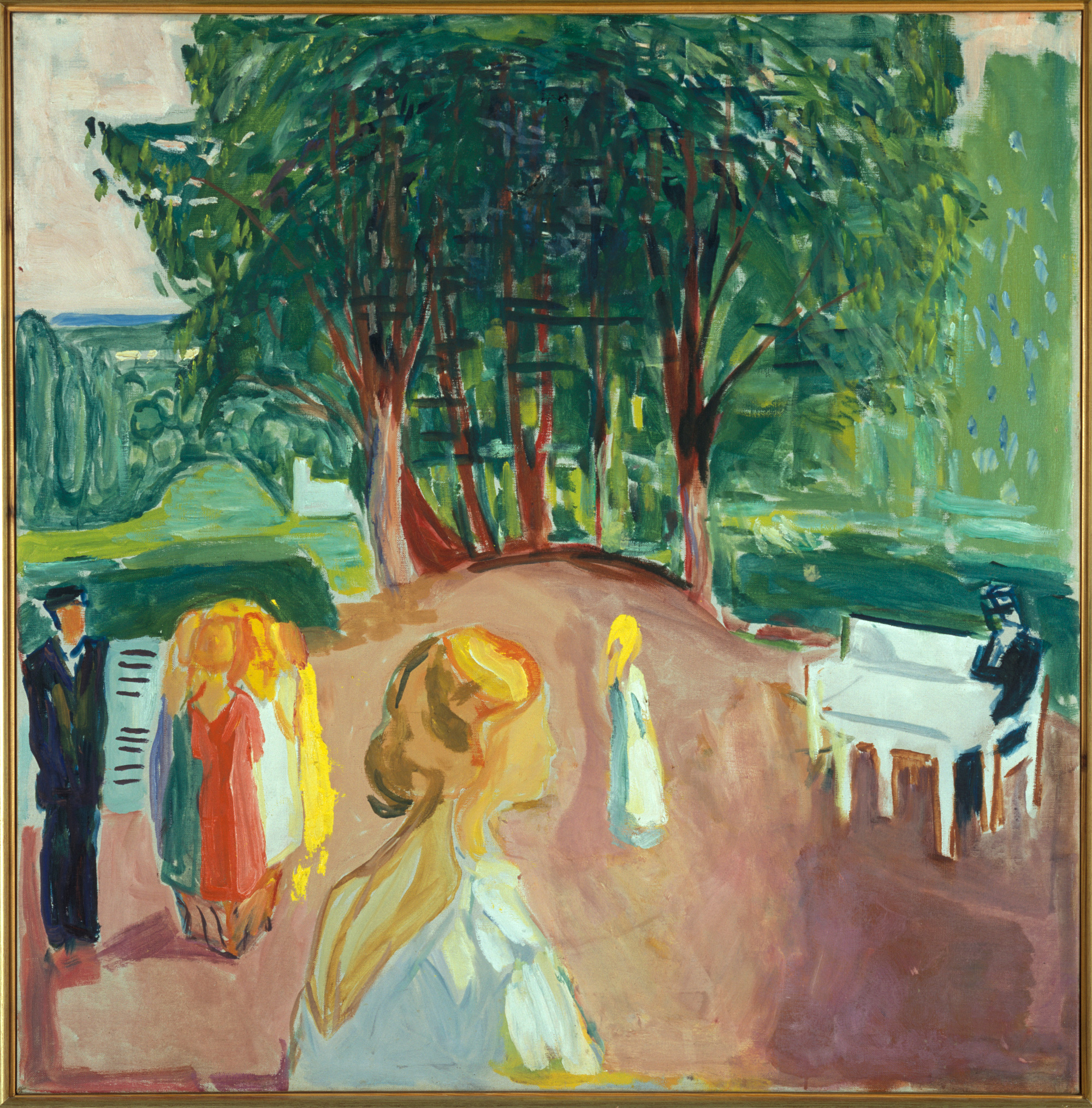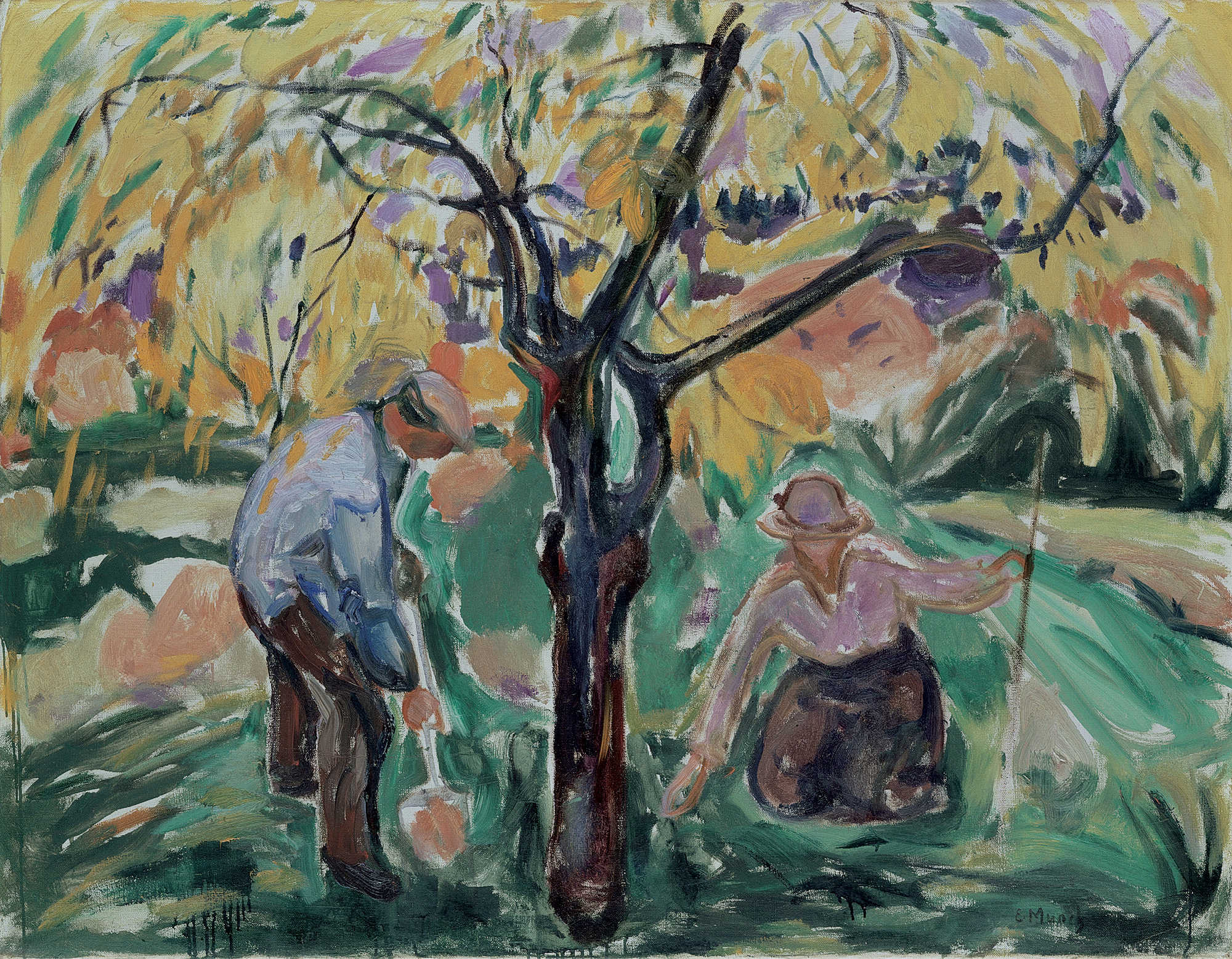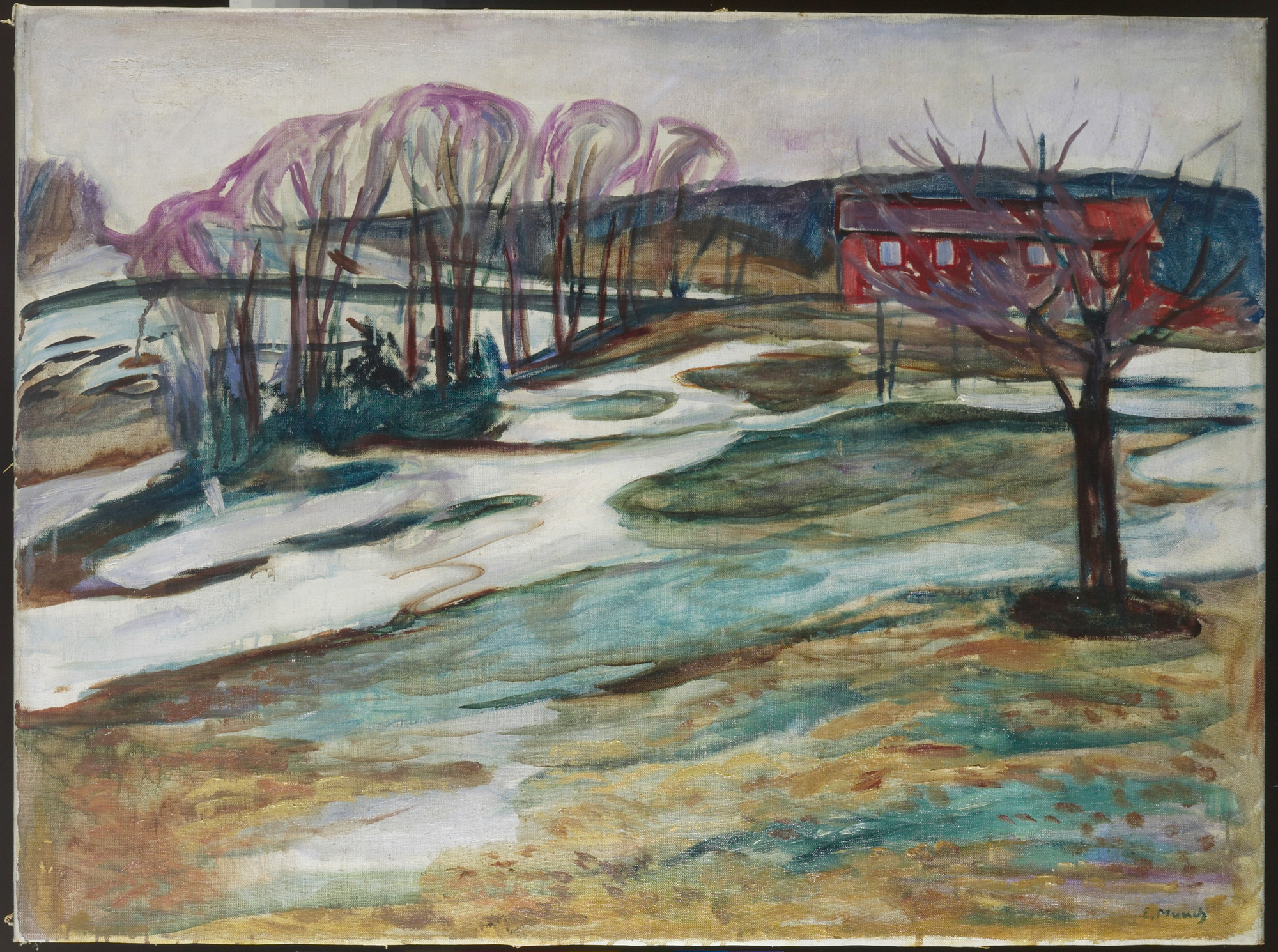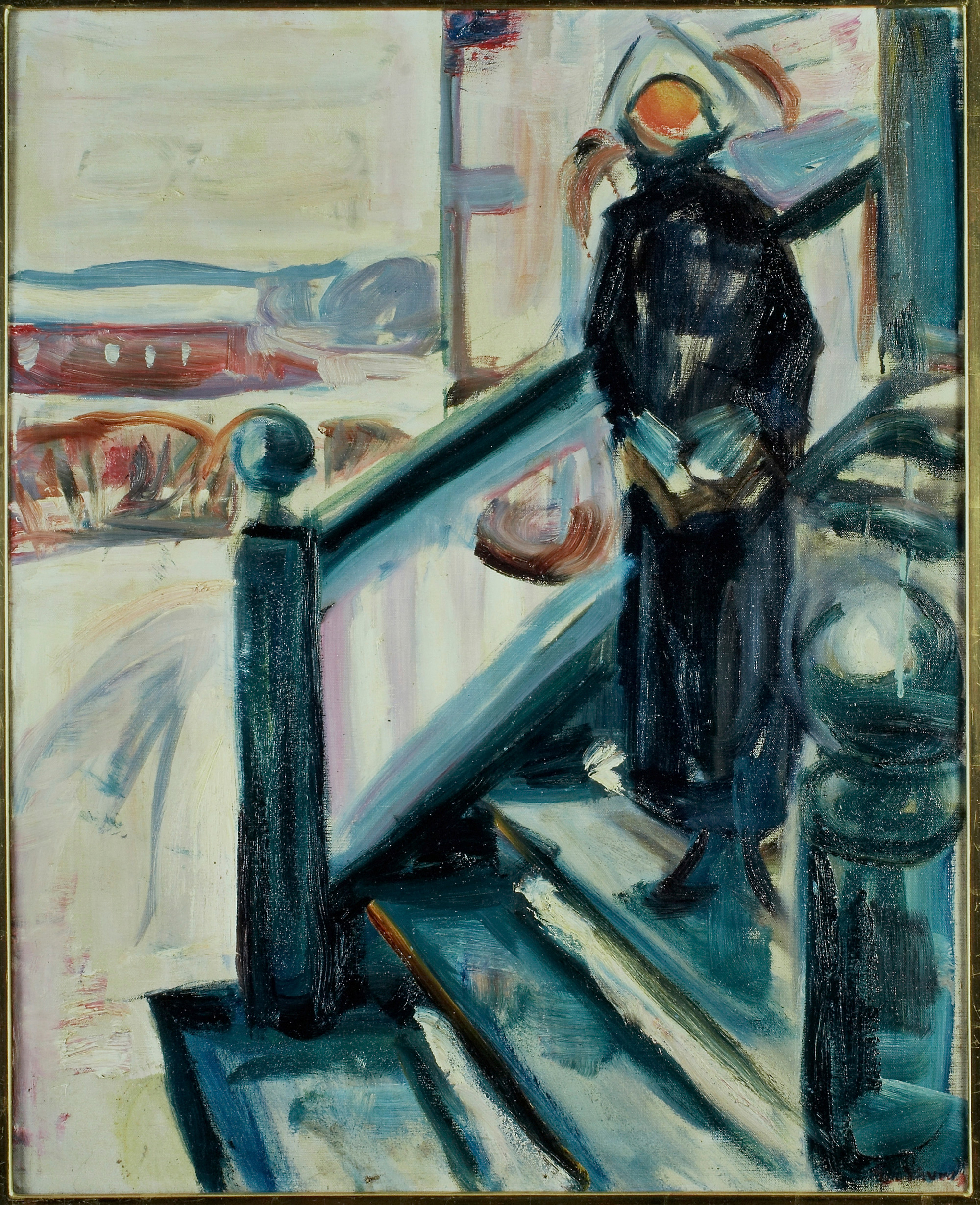Edvard Munch (born 12 December 1863 in Løten, died 23 January 1944 at Ekely) is one of the most important artists of the modernist era. His active career spanned more than sixty years, from his debut in the 1880s right up until his death in 1944. A proponent of symbolism during the 1890s, he became a pioneer of expressionist art from the early 1900s on. His relentless experimentation in painting, printmaking, drawing, sculpture, photography, and film has given him a unique position in the history of Norwegian and international art.
He is best known for paintings such as The Sick Child, The Scream, Madonna, and the large decorative work The Sun in the Aula (the ceremonial hall) of Oslo University.
Munch used the fee he received for the decoration of the university Aula to purchase the eleven-acre property at Ekely, a former plant nursery at Skøyen on the outskirts of Oslo, in 1916. Munch was fifty-three years old when he moved to Ekely, and already a famous and wealthy artist. In addition to the nursery garden, which Munch used for growing fruit and vegetables, the property encompassed a villa in the Swiss style from 1897, an orchard, and several outbuildings. Over the years, Munch had several small workshops and studios constructed around the property, including some designed for open-air painting. The surroundings became part of his art, captured in powerful, vibrant brushstrokes; the horses in the fields, the elm wood, and the fruit trees in his garden.
The good working conditions at Ekely and the inspiration of the immediate area are reflected in Munch’s prolific and colourful output from this period. He painted the verdant nature, the changing of the seasons from summer to autumn, winter to spring, from ploughing with horses to harvest time. Ekely and its surroundings, or the view from the veranda, feature in many of Munch’s paintings from the latter decades of his life. The garden and arbour are recognisable in several works, while the interiors provided the background for many of his late self-portraits.
Well-known paintings from Ekely include Spring Landscape with Red House (1926), Apple Tree in the Garden (1932–42), and several variations on The Red House (1926–35). Other works capture local agriculture and nature, the atmosphere of the elm wood, or the landscape at night in winter, most notably Starry Night. He also painted here the unflinching self-portraits of his old-age, of which the best known is Self-Portrait. Between the Clock and the Bed (1940–42).
Edvard Munch died at Ekely, Oslo, on 23 January 1944 and is buried in Æreslunden (the Grove of Honour) at Vår Frelsers gravlund (the Cemetery of Our Saviour) in Oslo. In his last will and testament, Munch bequeathed his large collection of paintings, drawings, prints, and print plates to the City of Oslo, a collection that consisted of 1,027 paintings, 6 sculptures, 4,442 drawings and watercolours, and as many as 15,000 prints.

